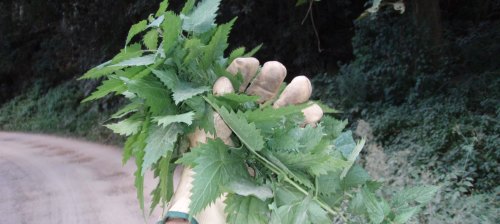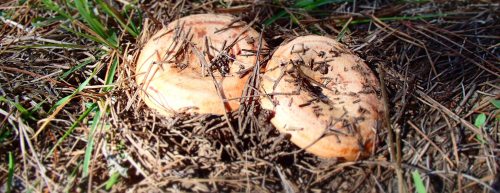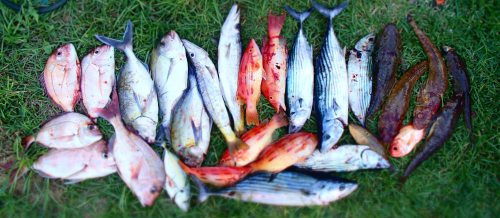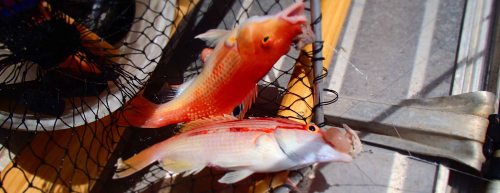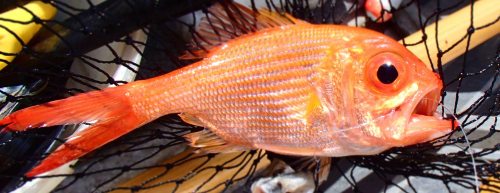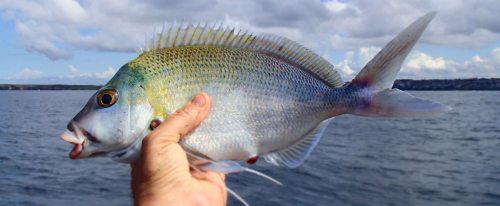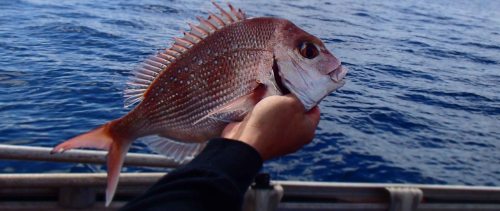My first nettle (Urtica spp.) recipe, made in England and taking on the traditions there, was a potato and nettle potage (either a stewy soup or soupy stew in my understanding). Back in Australia, where Greek and other Mediterranean food is more embedded in the culture, the next was cheese and nettle pastries. Along the way, I have chucked it in fairly indiscriminately as a ‘spinach substitute’ (although I use ‘substitutes’ so much more often than spinach, it is not a very fair term).
More recently it has been nettle tea. The flavour is mild and mixes in easily with whatever concoction I have on the go (currently lemon myrtle, ginger, strawberry leaf, fennel and lemon grass). Health claims (some proven) abound, none seem to be contraindicated by any issue or medication of mine, and so I figure that small doses in mixed tea are going to beneficial (but check for yourself, especially if you are going to consume a lot and are on blood sugar, blood pressure, blood thinning or psych drugs).
Out my way we have an Australian native ‘scrub nettle’ (Urtica incisa), although the European introductions of Urtica dioica (large leaf) and Urtica urens (small leaf) are also about.
Gloves are highly recommended, either leather work gloves or rubber dishwashing gloves being my preferred protection when picking. Sometimes I don’t fuss much about a few stings and other times they annoy me; picking nettles is like managing boundary-pushing naughty kids – it can bring out patient benevolence and suffering with a smile, or a lip-bitingly restrained frustration, depending on how it catches you. And so with the same analogy, you don’t want to approach it by sizing up the enemy, but with a well thought out engagement with something that may try you but which you actually love.
Once picked, the leaves and stems begin to wilt and with that the stinging hairs largely wilt too – after a day or so they can be dealt with in bare hands, giving just a few dull stings to the fingertips that feel somehow more numbing than painful. Nettles are commonly host to a fair few bugs hiding among the stinging protection, so it is useful to give them a chance to abandon the wilting pile while you are at it. Tie them in bunches, give them a rinse and hang them somewhere breezy, then come back to pluck leaves (the child-rearing analogy ended with last paragraph by the way – just so we’re clear). You then have something for dinner, for steaming and freezing (ice cube trays are handy for setting aside little doses that can go in anything taking cooked greens) or for the dehydrator. Once dried, I don’t suppose it matters whether it ends up in tea or food (or a hair rinse for that matter).
In more temperate parts of the world, nettles are often a spring thing, but with our native version, it seem that like many plants, the flush of new growth normally associated with spring can come any time after solid rains. This makes them just as likely to be an autumn or winter harvest in the areas that I go after them.
I think that nettles are one of those forages where neophobia can quite reasonably make for a limited and tentative start – these are leaves that you won’t touch after all, and so might not easily take to eating. But when you wrap your head around the idea that the stings are a defence behind which they don’t then have an added deterrent of inedibility (or unpalatibility), you may, like me, become quite fond of them as a vegetable or tea. After all, there aren’t too many plants that can do both (while also cutting it as allergy medication, dandruff shampoo and enough other things to get someone to settle someone down to write a book of 101 uses).
